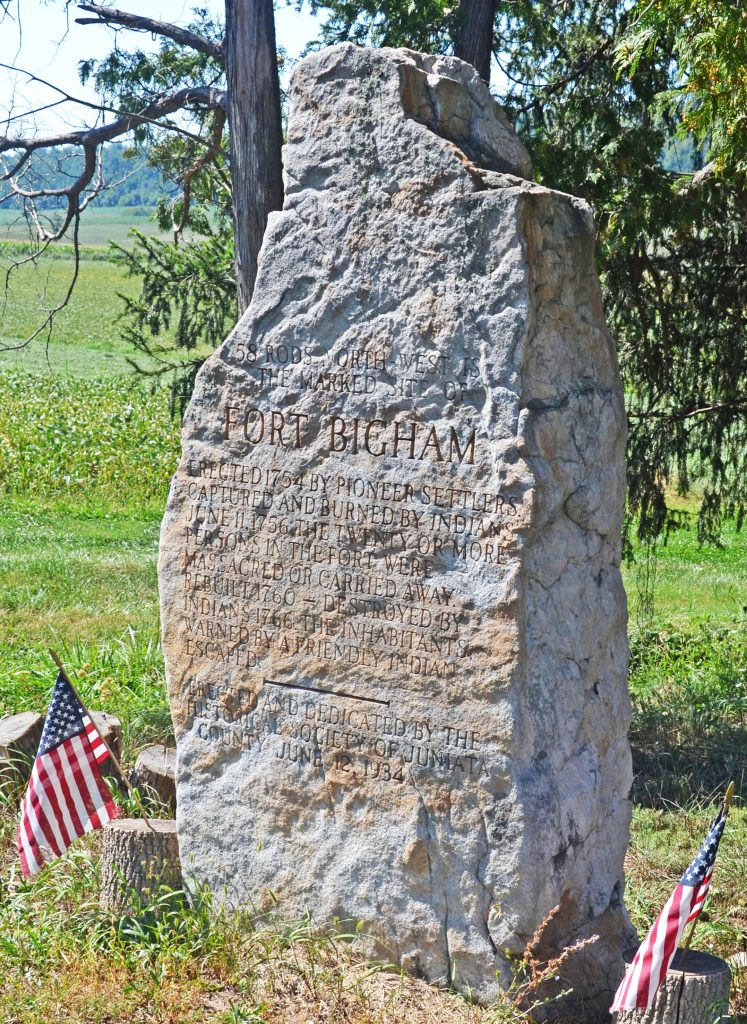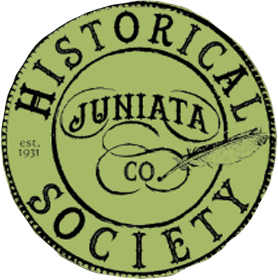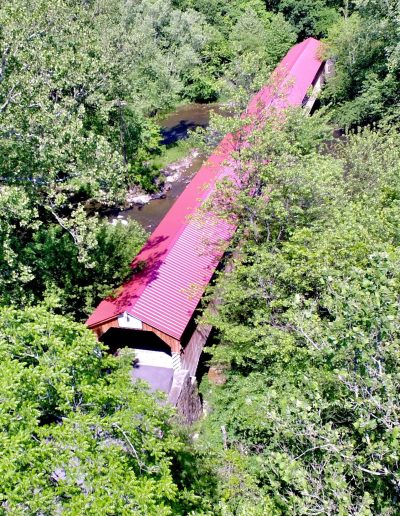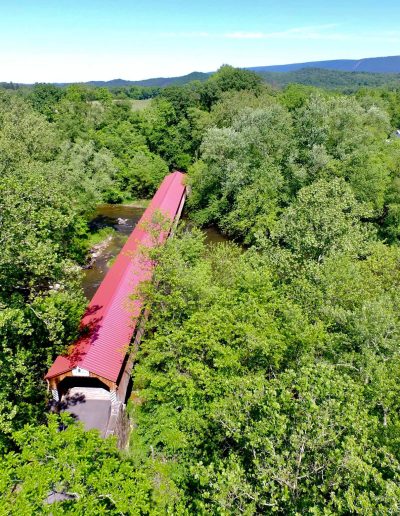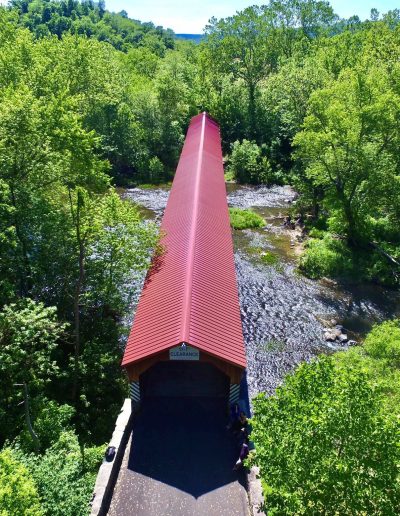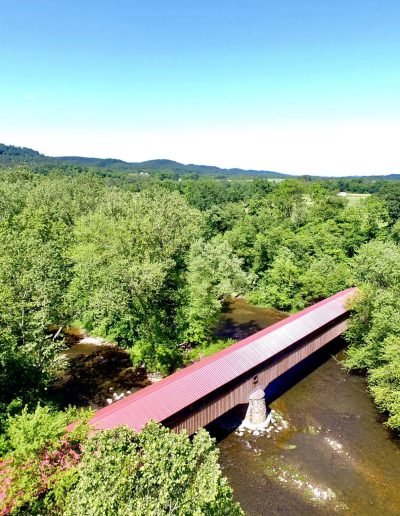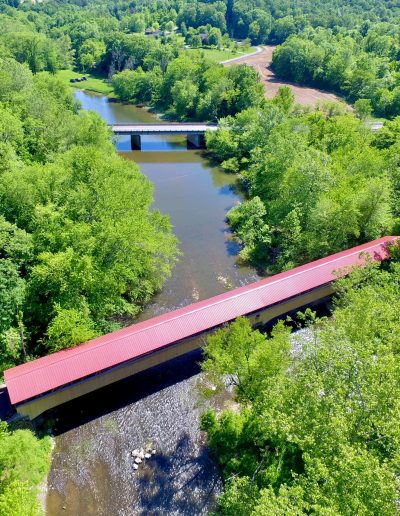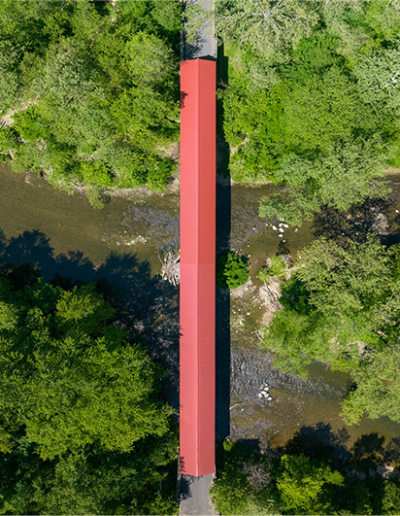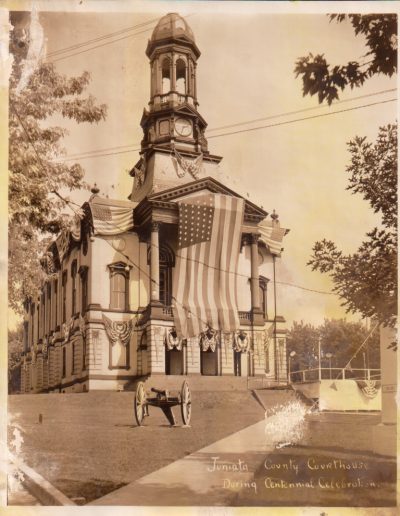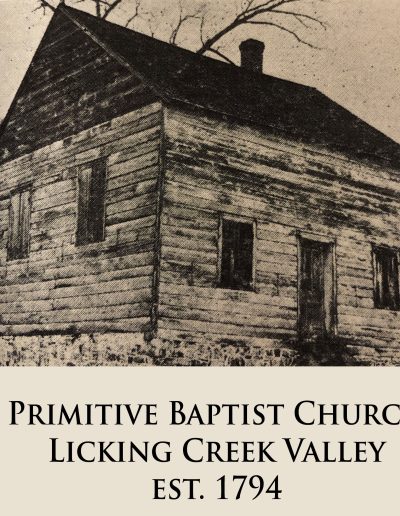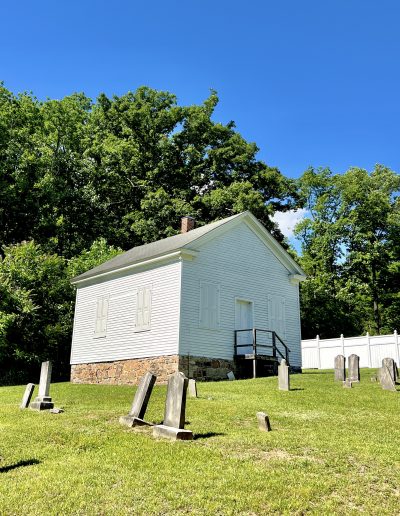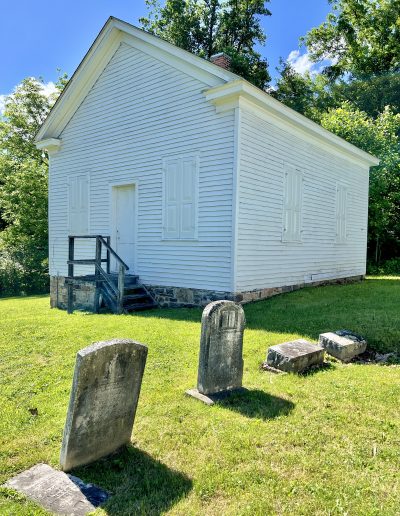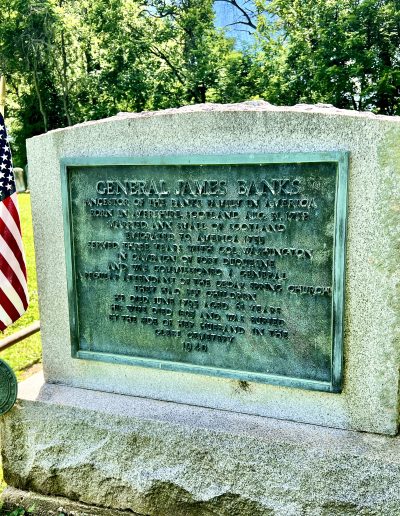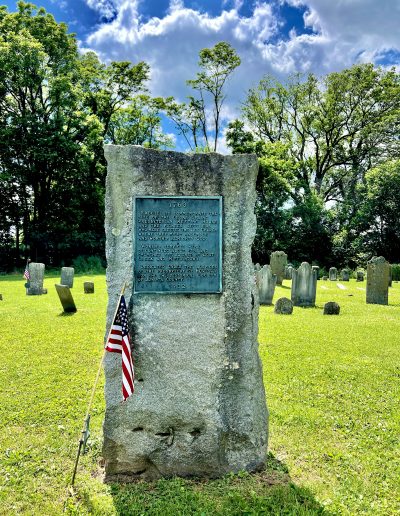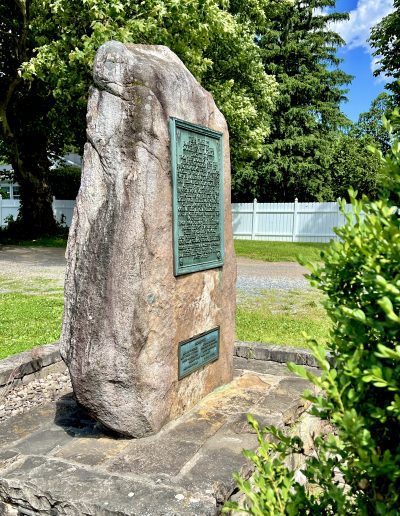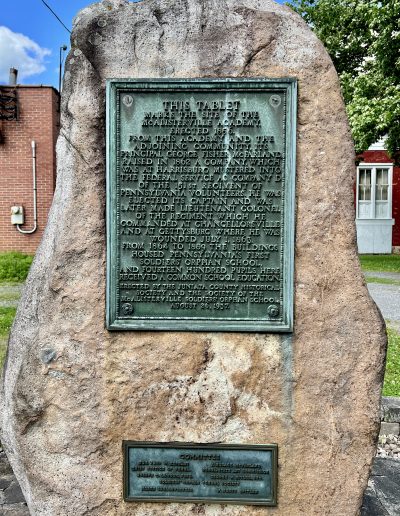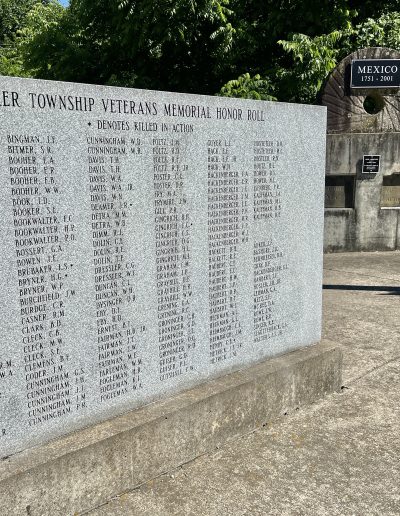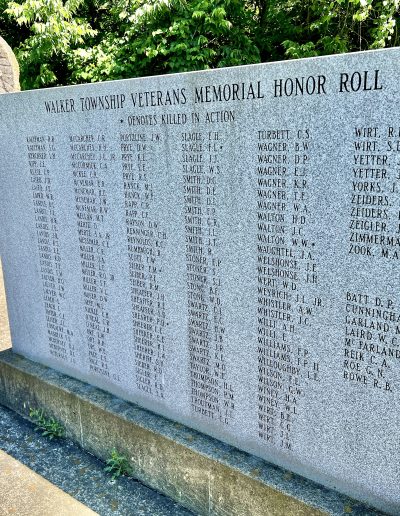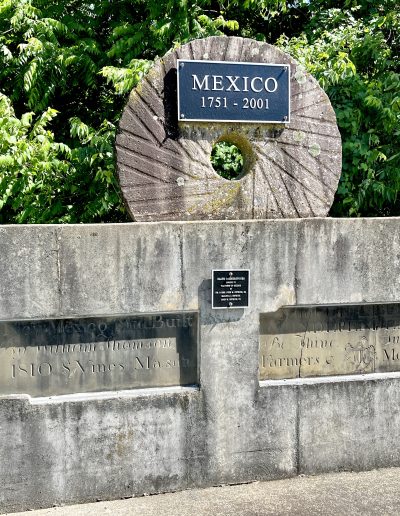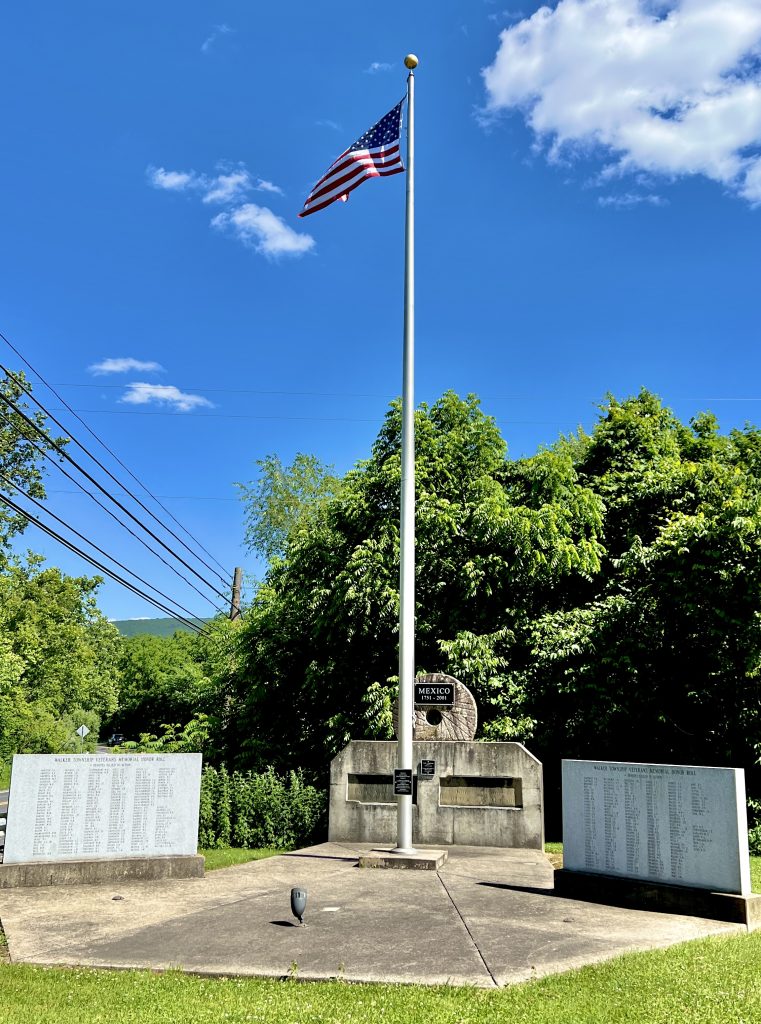Preserving Juniata County's Historic Sites
At the Juniata County Historical Society, we are dedicated to preserving and promoting the rich history of our community. Each of our sites is a treasure trove of memories and representative of our collective identity. We continue to preserve these sites with the support of our generous volunteers and donors.

POMEROY - ACADEMIA COVERED BRIDGE
The Pomeroy Academia Covered Bridge proudly stands as the longest covered bridge remaining in Pennsylvania. The bridge spans an impressive 278 feet, 4 inches across the Tuscarora Creek near Academia.
Constructed in 1902 by James N. Groninger, the bridge showcases the enduring craftsmanship of the double span Burr Arch design. It holds a prestigious place on the National Register of Historic Places, underscoring its significance in our state’s architectural history. In June 2009, we celebrated a major milestone with the completion of an extensive eight-year restoration project, which cost $1.4 million. This stands as a testament to our longstanding dedication to preserving of our cultural heritage sites.
While you’re here, don’t forget to sign the visitor’s book, to put your name alongside visitors from across the nation and world!

Address to Pomeroy – Academia Bridge
70 Mill Rd.
Port Royal, PA 17082
Directions from Rt 75
- Take Rt. 75 south/west about 5 miles through the town of Port Royal.
- Continue on Rt. 75 until reaching the former Spruce Hill Lunch.
- Turn slight right onto Spruce Hill Rd.[SR 3013].
- Drive approximately 1 mile to the Tuscarora Creek.
- The Pomeroy Bridge can be reached on either side of the Tuscarora Creek.
- Turn right onto Covered Bridge Road [before crossing the Creek] or turn right onto Mill Rd. after crossing the Creek.
- Parking is on the side of the road.
- Handicap access is available on either side but you can park closer to the bridge on Covered Bridge Road.
Directions from Rt 35
- Turn at Cross Rd [T388]. Cross Rd. is approximately 9 miles south/west of Mifflin, PA on Rt 35.
- If driving from the south/west turn right onto Cross Rd; if driving from Mifflin, PA turn left onto Cross Rd.
- Drive .6 mile on Cross Rd to intersection of Cross Rd. and Academia Rd [SR 3017].
- Turn right and follow this winding road 1.1 miles to intersection of Academy Rd.[SR3015] and Academia Rd. [SR 3017].
- Turn left on the Academy. Rd and drive to stop sign.
- Turn left onto Groninger Valley Rd. Drive approximately 100 yards and turn right onto Spruce Hill Rd [SR 3013].
- Drive less than 1 mile, turn left onto Mill Rd. or cross the Tuscarora Creek and turn left onto Covered Bridge Rd.
Book Indian Mound
Another site in Academia, Book Indian Mound is a cautionary tale in historic preservation. An early publication on the subject was U.J. Jones’ “History of the Early Settlement of the Juniata Valley,” published in 1889. For many years, the mound’s purpose and ultimate significance remained a mystery. In 1929, we finally got some answers with an excavation by archaeologists from the Pennsylvania Historical Commission.
Tragically, prior to this discovery, early landowners, unaware of the mound’s cultural importance, had used much of its contents as fertilizer, scattering these irreplaceable artifacts across their fields. Additionally, curious locals conducted their own searches, removing numerous Indigenous relics. By the time of the Commission’s official excavation, the site had suffered significant alterations due to plowing and vandalism, obscuring many of its characteristic features.
From the belated excavation, the site was determined to be a burial mound of the earliest communities of the Clemson Island Culture in Central Pennsylvania (during the Late Woodland Period circa 700 ce – 1300 ce). It’s impossible to say what we could have learned about this prehistoric culture had this site not been treated with such little regard.
This story underscores the vital need for the preservation of such sites, not only to honor and understand the past but to respect the cultural heritage of the indigenous communities connected to these lands.
The Juniata County Historical Society does not own this site, so please be respectful when visiting.
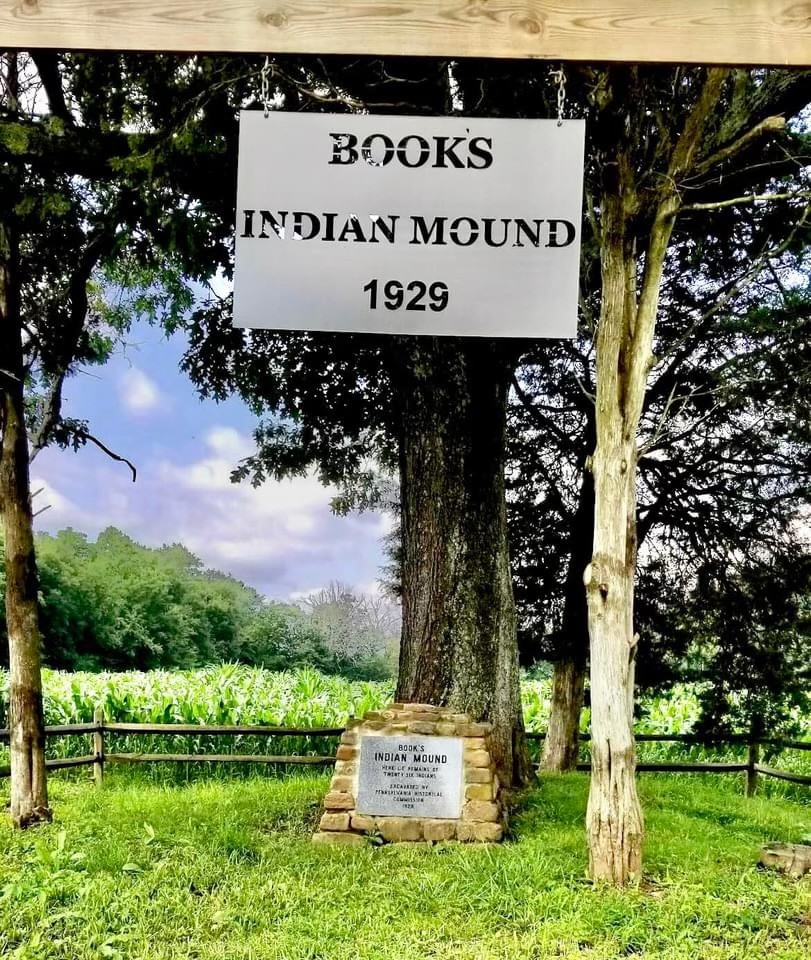
Address to Book’s Indian Mound
1547 Indian Mound Rd.
Mifflintown, PA 17058
Directions from Rt 75
- Driving out of the driveway of the Museum, turn right, than turn right again onto SR 3015 Academy Rd.
- Drive to stop sign [barn on left]; turn right onto Groninger Valley Rd. SR 3008.
- Drive 1.4 miles on Groninger Valley Rd.
- Turn left onto SR 3019 Indian Mound Rd. Drive .4 miles; the Indian Mound in on the right in the field.
Directions from Rt 35
- Turn at Cross Rd [T388]. Cross Rd. is approximately 9 miles south/west of Mifflin, PA on Rt 35.
- If driving from the south/west turn right onto Cross Rd; if driving from Mifflin, PA turn left onto Cross Rd.
- Drive .6 mile on Cross Rd to intersection of Cross Rd. and Academia Rd [SR 3017].
- Turn right and follow this winding road 1.1 miles to intersection of Academy Rd.[SR3015] and Academia Rd. [SR 3017].
- Turn left on the Academy. Rd and drive to stop sign.
- Turn left onto Groninger Valley Rd. Drive approximately 100 yards and turn right onto Spruce Hill Rd [SR 3013].
- Drive less than 1 mile, turn left onto Mill Rd. or cross the Tuscarora Creek and turn left onto Covered Bridge Rd.
JUNIATA COUNTY COURTHOUSE
In May 1873, architect L.M. Simon from Harrisburg was commissioned to draw plans for a new courthouse in Juniata County. By June 1, 1873, a contract was established with John B.M. Todd to supply 425,000 good bricks and 20,000 pressed bricks. In July 1873, advertisements for proposals were prepared, and on August 11, 1873, bids for the “erection and enlargement of the Courthouse” were accepted by the commissioners.
Messrs. Hetrich & Fleisher of Newport, Perry County, were awarded the contract to build the new courthouse according to the plans and specifications for the sum of $42,100.00, with a completion date set for January 1, 1875. The courthouse was completed as per the contract, with the addition of a bell tower, clock, furniture, pavement, fences, and other improvements, bringing the total cost to $63,000.00.
This current courthouse is the second one used to house the county’s government. The first Juniata County Courthouse was constructed in 1833 based on plans prepared by Thomas McCurdy. The County Commissioners accepted these plans, and a contract was made with Ames Gustine and Everett Oles to erect the courthouse at a cost of $3,940.00. The first courthouse served until 1873 when the building was razed to make way for the new structure.
While the Juniata County Historical Society does not own or administer the courthouse, we maintain a revolving display of county artifacts in the bookcases located in the hallways of the courthouse. These exhibits offer visitors a glimpse into Juniata County’s rich history and heritage.

Address to Juniata County Courthouse
1 N Main Street
Mifflintown, PA 17058
Directions from 322
- Head SW on PA-35
- Travel 1.4 miles and arrive at the Juniata County Courthouse in Mifflintown square
Tuscarora Valley Primitive Baptist Church
Established May 17, 1794, the Tuscarora Valley Primitive Baptist Church stands as a beacon of Juniata County’s rich spiritual and communal history. This historic church traces its origins to the fervent reform movements of the early Protestant Reformation and embodies the enduring traditions of America’s early Baptist communities.
The church faced various challenges over the years, including periods of inactivity and the eventual re-establishment of their meeting house using materials from their original log structure. Embodying the traditional values of Primitive Baptists, they resisted modern innovations in church practice, maintaining a focus on fundamental ecclesiastical principles like unsalaried ministers and a cappella singing.
The last recorded meeting occurred in 1947, concluding a significant chapter in Juniata County’s spiritual heritage, yet leaving behind a legacy of steadfast faith and community resilience.
Offered to the Juniata County Historical Society through a bequest from [XXXXX], we’re proud stewards of this historic site. We honor and preserve the legacy of the Tuscarora Valley Primitive Baptist Church, ensuring that its story of faith and community endures for future generations to learn from and admire.
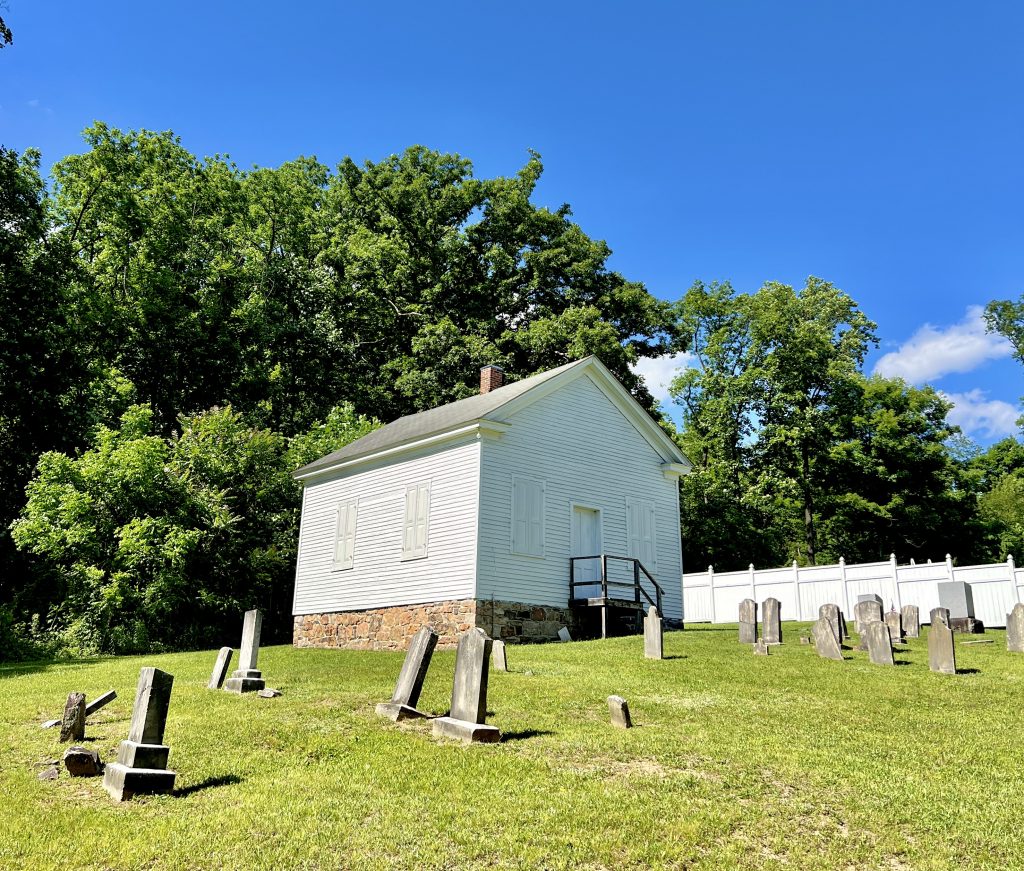
Address to Tuscarora Valley Primitive Baptist Church
10451 Licking Creek, Rd.
Mifflintown, PA 17059
Directions from 322
- Directions needed
Other Sites
The Juniata County Historical Society is proud to administer several significant historic sites and monuments throughout the county, each contributing to the rich tapestry of our local heritage. The Juniata County Historical Society remains committed to their preservation, ensuring that future generations can learn from and appreciate our rich past.
Glebe Cemetery
As the owners and administrators of Glebe Cemetery, we are dedicated to preserving this hallowed ground, which serves as the final resting place for many of Juniata County’s earliest settlers and notable figures. The cemetery is a vital link to our past, offering a place of reflection and remembrance.
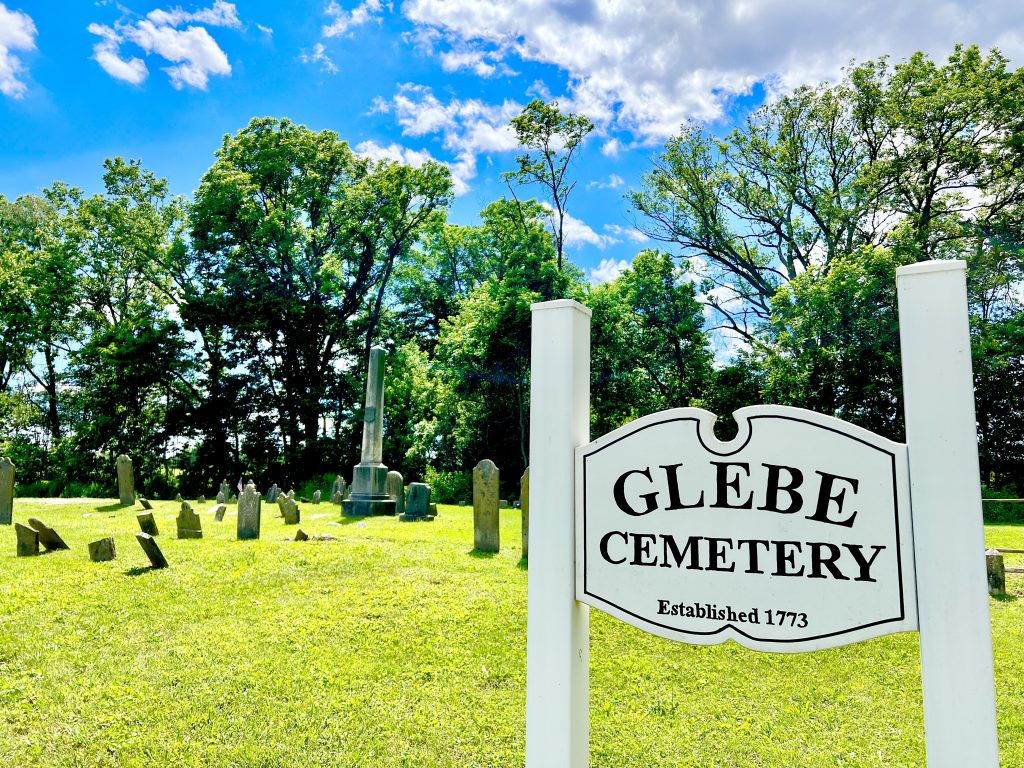
McAllisterville Academy and Soldier’s Orphans School Monuments
We also oversee the monument at the historic McAllisterville Academy and the Soldier’s Orphans School. This monument honors the legacy of education and the care provided to children orphaned by the Civil War, reflecting the community’s commitment to nurturing future generations even in times of hardship.
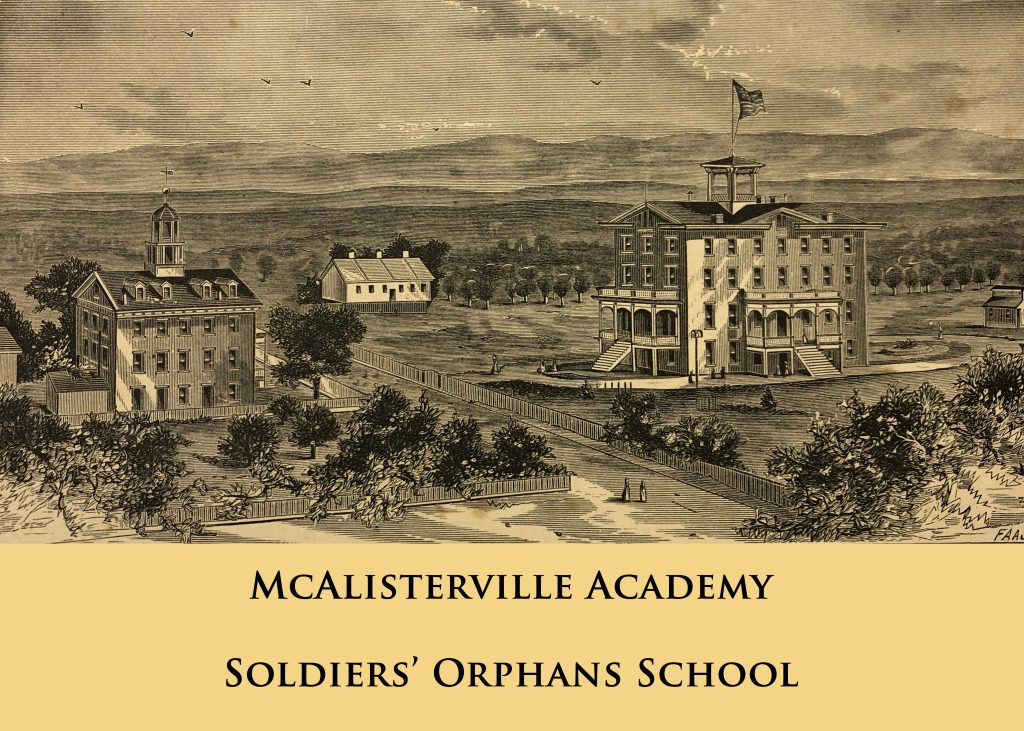
Monument for Fort Bigham
Located in Honey Grove, the Fort Bigham monument honors one of the area’s early defensive efforts.
